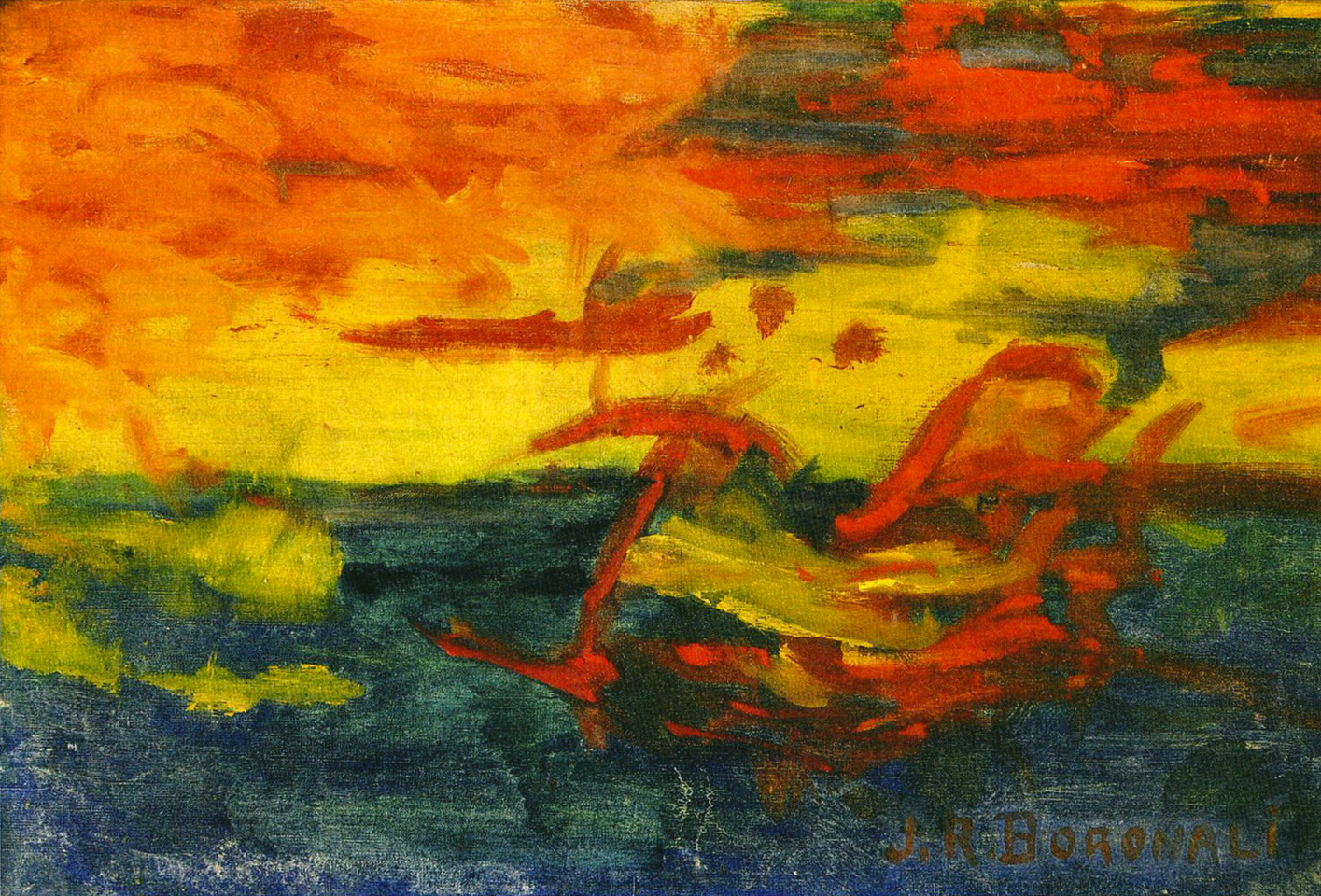 |
| Et le soleil se coucha sur l'Adriatique by Jachim-Raphael Boronali (Aliboron) |
On a day in March 1910, in the Montmartre district of Paris, the quarter frequented by artists, a young art critic by the name of Roland Dorgelès arranges a rendezvous in the club Lapin agile with two of his friends, the critic and writer André Warnod, and the illustrator Jules Deraquit.
At the same time he informs a local innkeeper, known as Father Frédé, that he will require the services of his donkey Aliboron - Lolo to those who knew him - for a joke he wishes to play on his Impressionist painter friends.
 |
| Frédé with his donkey Lolo at the door of the Lapin Agile |
The three friends enjoy a convivial dinner while Frédé goes to bring Lolo. At around 3 p.m. a representative of the legal profession arrives, Me Brionne, invited by Roland to give formality to the pleasantry. Then Frédé returns with Lolo, and they get down to work.
Roland puts a canvas on a chair. Already painted on the canvas are two colours representing the sky and the earth, a technique directly inspired by Monet. Then Frédé attaches a brush to the tail of Lolo, brings the donkey close to the canvas, and dips the brush in a pot of paint. He then feeds Lolo carrots and tobacco leaves in order to stimulate his creative forces, or put another way, to get him to wag his tail over the canvas.
And it works! "Look how the donkey's painting all on his own!" cries Frédé, unable to restrain his enthusiasm. "Yes, I see", replies the legal official. But Lolo quickly loses the inspiration and his tail drops.
Nevertheless, the painting is finished. "It's a masterpiece!" they exclaim. But what to call it? Several suggestions are put forward before Roland decides on the title Et le soleil se coucha sur l'Adriatique (Sunset over the Adriatic). And a name for the artist? Joachim-Raphael Boronali, Roland decides, being an anagram of the donkey's name Aliboron.
 |
| The artist at work |
Several days later the painting gets its first viewing at the Salon des Indépendants, an event open to all-comers. Roland hands out a text entitled The Manifesto of Excessivism. A collector offer 400 francs for the work. Art critics discuss the painting, until Roland reveals the joke to a daily newspaper complete with photographs.
It was to be Lolo's only work and is now on permanent display for art lovers throughout the world at:
Espace culturel Paul Bédu
8 Bis rue Farnault
91490 Milly-la-Foret (France)


Hi, where did you find these images? Do you know who owns them?
ReplyDeleteThis story about a donkey creating artwork is incredibly amusing.
ReplyDelete